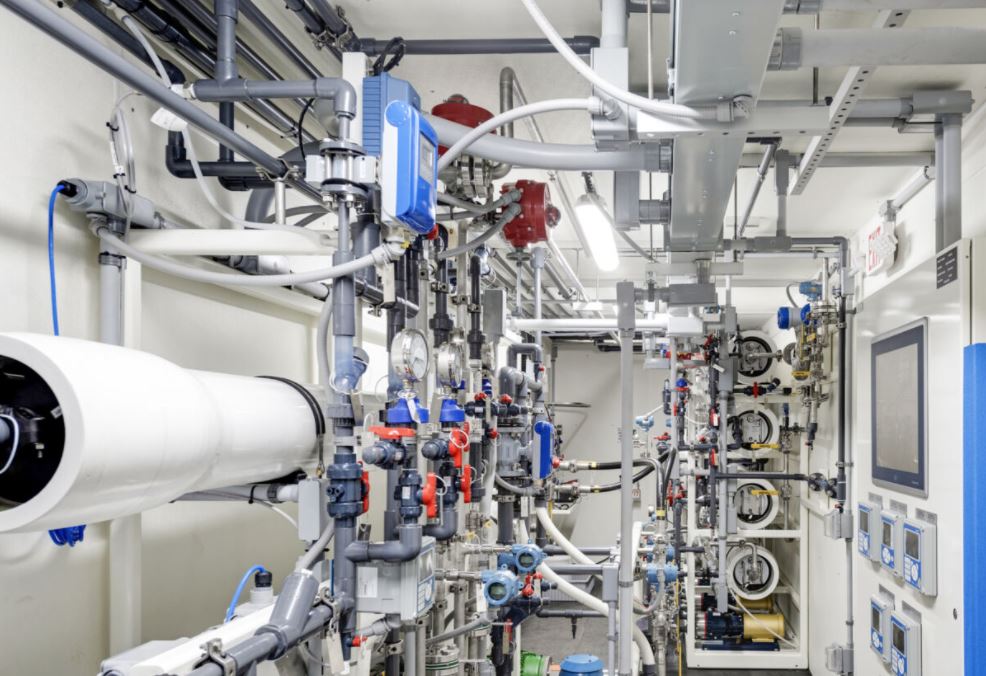In these days of seemingly never-ending chip shortages, more and greater varieties of semiconductors are in demand. Chip fabs around the world are now racing to catch up to the world’s many microelectronic needs. And chip fabs need a lot of water to operate.
By some estimates, a large chip fab can use up to 10 million gallons of water a day, which is equivalent to the water consumption of roughly 300,000 households.
While semiconductor companies have long understood that water access is a key element to their business, over the past decade that awareness has become more acute. Back in 2015, a drought in Taiwan (where 11 of the 14 largest fabs in the world are located), led Taiwan Semiconductor Manufacturing Co. to open up its plants to inspection to demonstrate their water conservation efforts. Also in 2015, Intel made it known that it had reduced its water consumption by over 40 percent from its 2010 levels in response to the arid conditions at the sites where its plants are located.
Since that time, water recycling at semiconductor plants has continued to increase, according to Prakash Govindan, chief operating officer at Gradiant, a company that offers end-to-end water recycling technologies to a range of industries, including semiconductors.
「半導體工廠的傳統廢水處理方法可以回收製程中 40% 到 70% 的水,」Govindan 解釋道。 “一些製造商仍然只回收了 40% 的水。”
然而,在過去兩年中,戈潤一直與半導體工廠合作,改善其水的再利用,使他們能夠回收 98% 的用水。因此,這些新的回收技術不需要每天從外部引入 1000 萬加侖的淡水,而是只需要從工廠外部抽取 20 萬加侖的水即可運作。
Gradiant 開發的技術是基於逆流逆滲透 (CFRO),它是對成熟逆滲透技術的改進。逆流流使該技術能夠將水回收率提高到比現有逆滲透技術高得多的水平。
雖然逆滲透技術依賴通常需要大量能量的高壓,但戈潤開發了一種熱力學平衡技術,可以最大限度地減少穿過過濾膜的驅動力,從而減少給定水量處理的能耗。
The water scarcity problem for Taiwan fabs has become even more acute in the past year due to new drought conditions. This has led the Taiwan fabs to adopt the latest water recycling technologies more rapidly than fabs in other geographic locations, with an eye toward fending off any interruptions to their production.
「採用更有效的水回收技術有三個驅動因素,」戈文丹說。 「首先是業務連續性中斷;這就是台灣晶圓廠在開始面臨異常乾燥的局部氣候條件時所發現的情況。第二個是永續發展問題,這是新加坡和其他地方晶圓廠的驅動力。第三就是節省成本,這是美國晶圓廠目前最關心的問題。
戈文丹表示,雖然業務連續性的中斷顯然是最迫切的驅動因素,但永續性和成本節約最終也會導致業務連續性問題。
「大多數(如果不是全部)公司董事會都會收到有關永續發展因素的報告,」戈文丹說。 “一些微晶片製造商甚至簽署了聯合國的淨零用水承諾,因此,永續性是一個巨大的推動力。”
半導體產業對永續發展議題的關注與該產業在過去 20 年的發展歷程密切相關。隨著特徵尺寸變得更小,晶片可以容忍的污染物水平以及它們使用的有毒化學物質的水平也發生了變化。 20 年前 Fairchild 在加州山景城進行晶片製造時所適用的方法與如今愛達荷州美光工廠的做法完全不同。
雖然永續性正在成為水循環利用工作的關鍵外部驅動力,但主要驅動力幾乎總是成本節約。例如,在亞利桑那州,尋找、採購和使用淡水的成本非常高,像戈潤這樣的公司只需回收利用其設法獲得的水就可以為公司節省大量資金。 「我們的處理成本通常低於採購和處置成本,」戈文丹補充道。
儘管美國晶圓廠並未因缺水而面臨業務連續性的威脅(儘管它們位於亞利桑那州等乾旱地區),但總體而言,氣候變遷對水資源供應構成了迫在眉睫的風險。據報道,氣候變遷和淡水供應有限已影響全球 40% 的人口。
「由於氣候變化,」戈文丹指出,「一些地區的淡水供應水平已經下降,而且相對於預測模型,這些數字很容易加速。水資源短缺可能比我們今天預測的更為緊迫。

